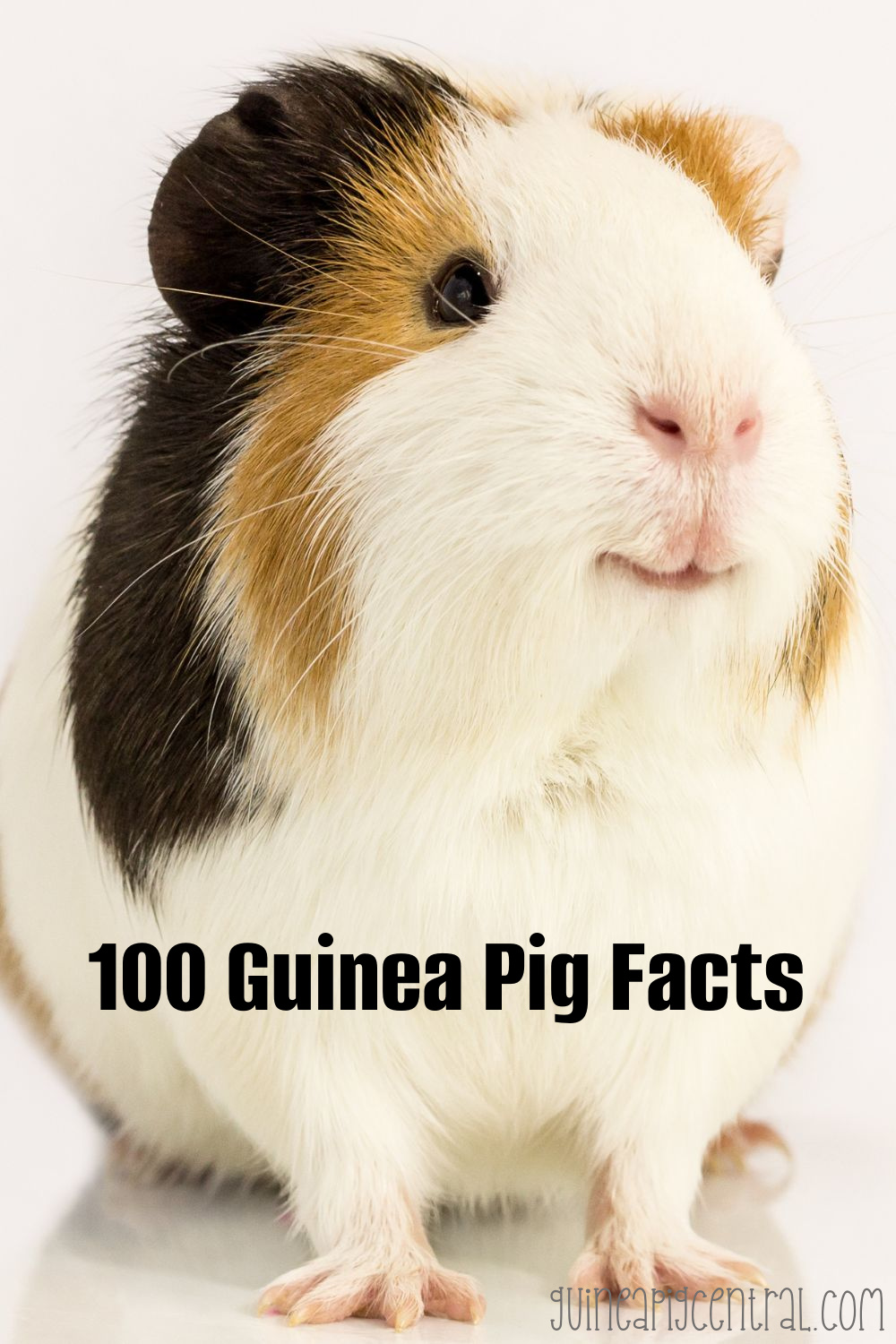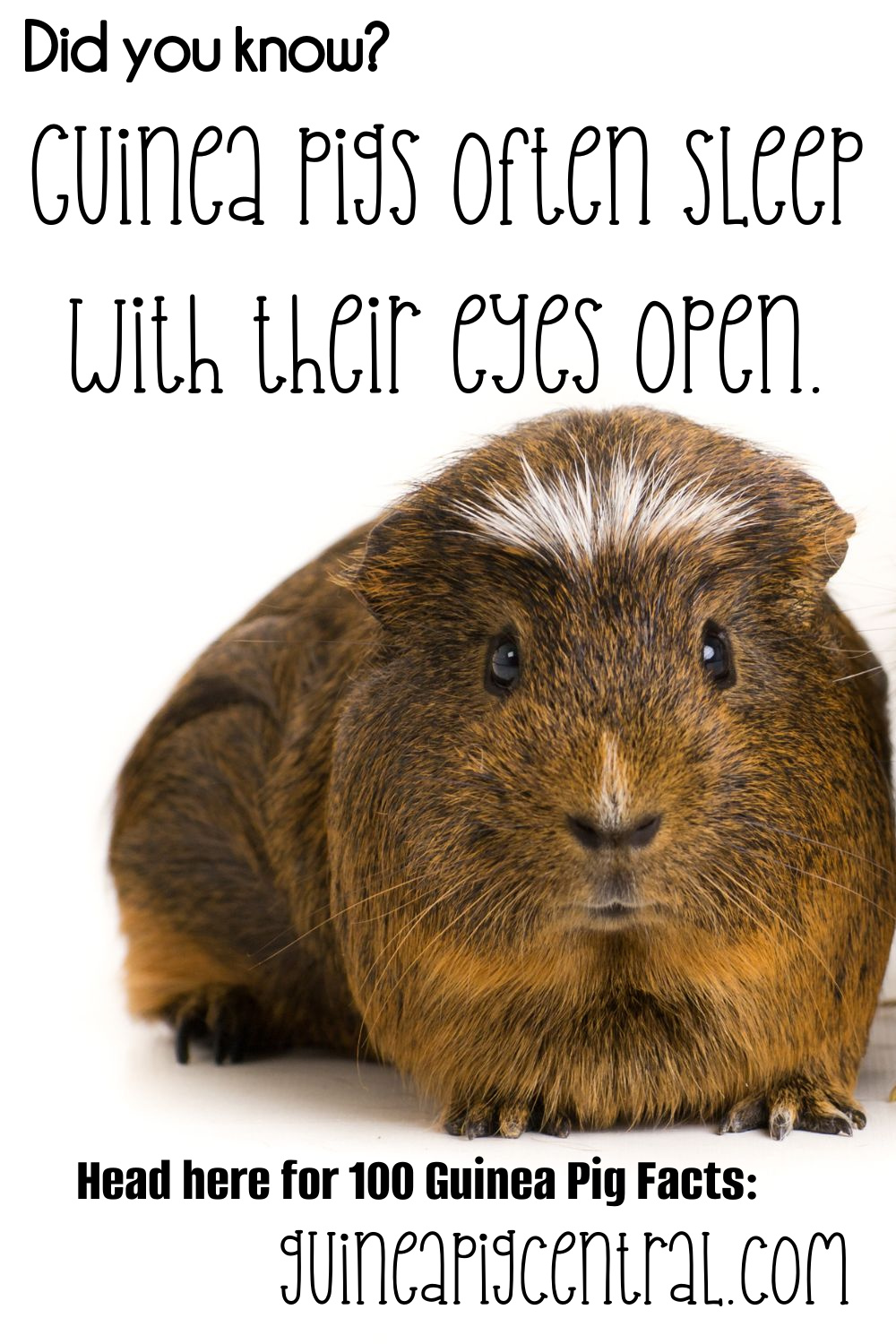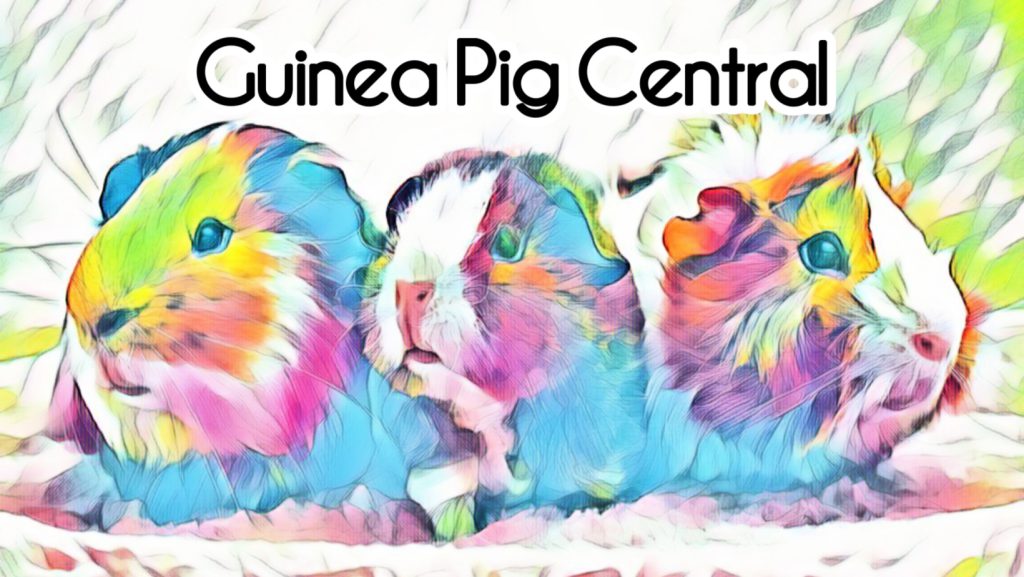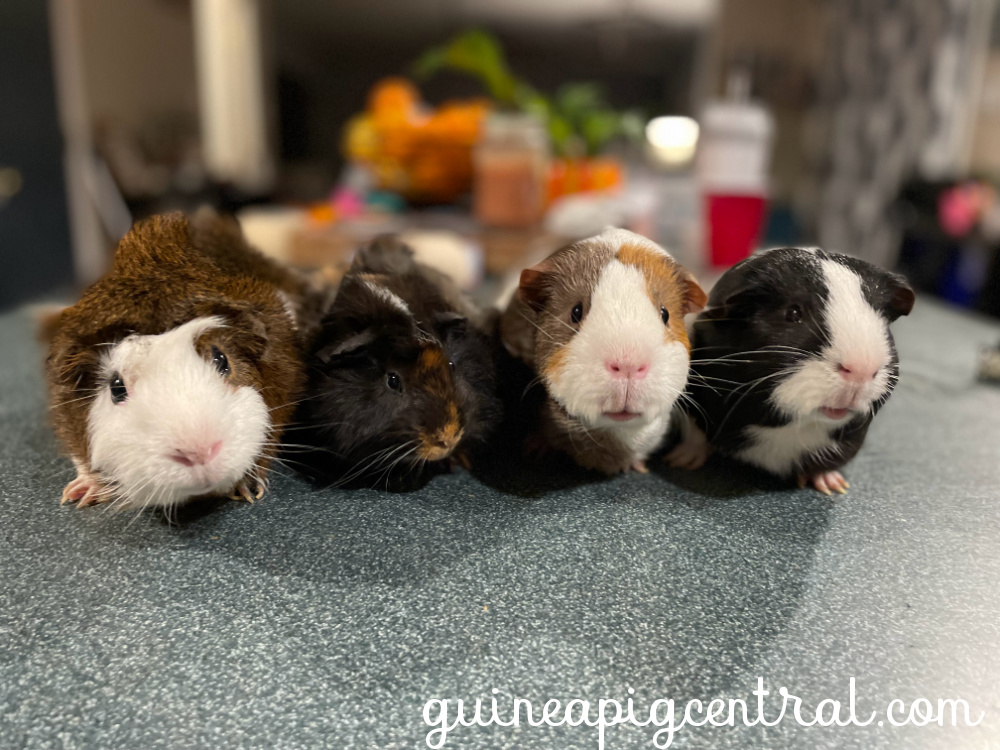Do you love guinea pigs? Then check out this fun post for you filled with 100 Guinea Pig Facts. Some you may know and some may be a complete surprise!

100 Guinea Pig Facts
We love our guinea pigs. They really make great pets. They are not ordinary animals and really have some pretty amazing qualities. If you want to learn some fun facts about guinea pigs you are in the right place. We’re sharing 100 guinea pig facts to get you started! There is so much to learn about these adorable little critters, you will definitely want to know as much as possible. These interesting facts will definitely get you excited about this popular pet. Most importantly you may even want to get a few of your own.
For those of you who are new to guinea pigs, some of these things might be surprising, for tried and true cavy lovers there’s probably a lot on this list that you already know. Hopefully, there is something that will surprise everyone on this list of 100 guinea pig facts.
- Guinea pigs live an average lifespan of 4-8 years in captivity
- They are born ready to walk
- Guinea pigs hop or jump in the air as a sign of excitement, this is called “popcorning”
- Guinea pigs are born with teeth and they never stop growing. That’s why it’s important to have chew toys for them in their cages to help their teeth from overgrowing.
Did you know this about Guinea pigs?
- They have an odd number of toes : 3 toes on their back feet and 4 toes on their front feet
- Despite their name, they are not closely related to pigs
- They are very social animals and usually live in family units or small groups of 3-10 piggies
- They cannot produce their own vitamin C and need it as a supplement or in their diet. That’s why it’s important to feed them fresh fruits rich in vitamin C.
- Guinea pigs can open their eyes in the womb
- They do not sleep for long periods and instead take lots of short naps.
- There are 3 main types of guinea pigs: American guinea pig /English, Abyssinian, Peruvian
- Female guinea pigs are called “sows” and males are called “boars” Young guinea pigs are called pups.
- Guinea pigs communicate through chirps, squeaks, and purrs
- They are herbivores
- It is uncommon but guinea pigs can bite
- Guinea pigs and hamsters are not from the same family and are actually entirely different species
- They cannot use exercise wheels or discs because of the shape of their spine
- They are typically active for about 20 hours per day
- Most guinea pigs have a total of 14 toes

- Guinea pigs can swim
- These fun little cavies are originally from Peru and From 1200 to 1500 CE were bred in increasingly exotic varieties of guinea pigs. Many of these had fur and coloring very similar to the varieties we know today. They were eventually brought to Europe and initially introduced by Spanish conquistadors.
- They have 4 incisors which you can see usually and molars in the back that you can’t
- Guinea pigs do not have tails
- Guinea pigs are also called cavies
- They are closely related to the world’s largest rodent, the capybara
Guinea pig info
- They cannot throw up
- Guinea pigs need to eat grass hay to thrive
- Guinea pigs are very social and like to interact with humans as well as other animals. They even enjoy human affection when you win their trust.
- They can be trained to do tricks and more
- Unfortunately the phrase “be the guinea pig” comes from the fact that they are common lab-testing animals
- Their eyes produce a kind of soapy tears that they will rub on themselves with their paws
- You can sometimes bond guinea pigs who don’t seem to like each other by bathing them together
- They need their nails trimmed regularly as they never stop growing
- They can eat many fruits and vegetables in moderation
- They can get scurvy just like humans if they do not have enough vitamin C in their diet
- Red bell peppers are the best source of extra vitamin C for guinea pigs
- They are prone to bladder and urinary tract stones which is why it is important to limit their calcium intake as much as possible
- They often sleep with their eyes open
- Guinea pigs digest their food twice
Baby guinea pigs are called “pups”
- They require a lot of care and special diets which makes them bad starter pets for children
- They “pancake” sometimes which is when they lay flat with their feet kicked out behind them
- They yawn when they are feeling relaxed
- Guinea pigs typically nap for a total of 4 hours each day
- When they are trying to show dominance or wish to mate they stand up tall and make a kind of chattering noise which is called “rumble strutting”
- Long-haired guinea pigs require haircuts
- They cannot climb and can live in enclosures without a top
- They learn the sounds of their home and will often associate the refrigerator opening and closing with treat time, they will respond with loud squeaks and chirps
These facts will blow your mind
- Guinea pigs will overeat pellets and become overweight if allowed
- They can become bored if they do not have a companion
- In Switzerland, it is illegal to own just one guinea pig
- Pregnant guinea pigs typically have 3-4 pups
- Their gestation period is 59-72 days
- They can become pregnant as soon as 15 hours after giving birth which is why it is important to house males and females separately
- They cannot use exercise balls because their spine does not bend like other small animals
Guinea Pigs are very heat sensitive
- They do better in cooler temperatures, best at around 68 F
- They don’t have very good eyesight
- Guinea pigs have small bald spots behind their ears
- Fresh Hay is important to keep their teeth from overgrowing. Lots of hay will be essential for their well being so stock up!
- They don’t usually like to have their heads touched and will bump you or headbutt you in response
- They poop…a LOT
- They enjoy time outdoors in the grass when the weather is nice
- They can eat things like grass, dandelions, and other vegetation in lawns as long as they’re not treated with pesticides
- They can swim but they don’t enjoy it and it can stress them out
- They have sensitive hearing, especially to high frequencies
- Guinea pigs love to chew and it keeps them busy and entertained
- They do not require a salt lick or mineral wheel like other small animals
- Guinea pigs can get mites and lice which require treatment but they’re not the same kind humans get so you can’t catch them from your piggies
- They should never have dairy products although ‘yogurt’ treats are a commonly marketed snack for guinea pigs
- Wrapping them up like a burrito in a soft towel or blanket can make them easier to handle for small kids and vet visits
- Queen Elizabeth, I had pet guinea pigs. They were valued as exotic pets, especially among the rich and members of the royal courts. She was one of the first European fans of guinea pigs. The earliest known written reports concerning guinea pigs are from the year 1547 in Santo Domingo, Dominican Republic.
More Guinea pig facts to blow your mind
- Commonly sold guinea pig cages are very small and not ideal for housing multiple piggies, try to find the largest one possible when starting to set up a guinea pig habitat.
- They have whiskers just like cats
- They require vet visits and usually, vets that specialize in their care are called “exotic” veterinarians
- Guinea pigs can tell their humans apart and will learn your voice and even your footsteps
- There are 13 different breeds of guinea pigs
- Apart from domesticated species, there are as many as 5 different species in the wild
- There have been guinea pigs in outer space
- They eat their own poop, it’s totally normal
- The oldest guinea pig on record lived 14 years and 10 months
- Guinea pigs and rabbits shouldn’t live together because a guinea pig’s diet is very different from a rabbit’s.
- Guinea pigs are prey animals
- They are very timid but will usually just freeze when frightened
- They do not originate from New Guinea as their name might suggest but actually from the mountain regions of South America
- They are considered adults at just 6-8 months of age
Baby guinea pigs can eat solid food right away
- They need about an hour of daily exercise to stay in good health
- Their normal body temperature is about 101 F
- They purr like cats when they are relaxed or happy
- Hairless guinea pigs are called “skinny pigs”

- They have very poor eyesight and depth perception despite being able to see up to 33 images per second…compared to 22 for humans
- Guinea pigs can run about 6 miles per hour which makes them easy prey in the wild
- The best type of hay for adult guinea pigs is Timothy hay
- Guinea pigs do not sweat
- Their official name is actually Cavia Porcellus
- They love to run and explore, they need a lot of space compared to other rodents
- Guinea pigs will mark their territory much like dogs
- They are very smart, highly perceptive, and sensitive animals
- They have a great memory and can remember pathways and food sources for many months in the wild
Hopefully, this list has helped you learn something new about guinea pigs! Be sure to let us know in the comments below what your favorite is of these 100 guinea pig facts. These will make even the best guinea pig owners experts on these amazing little animals that really are the best pets!


Leave a Reply